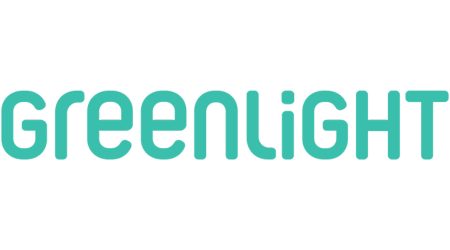Greenlight and BusyKid both have unavoidable monthly fees, but they’re full of features that can help your kids learn more about financial literacy. But these prepaid debit cards designed with kids in mind aren’t equal, and in the end, Greenlight might be a better option for most families.
BusyKid vs. Greenlight: A quick comparison
How features compare
Greenlight’s debit card and app has many features, including a financial literacy game, savings rewards, granular parental controls, custom debit cards and more.
BusyKid’s main outstanding feature is its investing feature, making it better suited for parents looking to teach their kids about investing. While Greenlight also offers investing, its basic plan doesn’t let kids play around with investing. You’ll need to upgrade to its next-tiered plan, which costs about $5.98 more than what you’d pay with BusyKid.
While BusyKid has its strengths, if features were a numbers game, Greenlight would win that round in a landslide.
| Features | Greenlight | BusyKid |
|---|---|---|
30-day free trial | No | Yes |
Store-level parental controls | Yes | No |
Custom spending limits | Yes | Yes |
Educational quizzes or games | Yes | No |
Chore assignment and allowance tracking | Yes | Yes |
Design custom debit card | Yes | No |
Investing features | Yes | Yes |
Credit-building opportunities | Yes | No |
Savings rewards | Yes | No |
Free ATM withdrawals | Yes | No |
Free replacement debit card | No | No |
Charity gifting option | No | Yes |
The similarities
Greenlight’s Core plan and BusyKid are similarly priced. Greenlight Core costs $5.99 per month. BusyKid bills annually for $48 per year via bank account transfer, which is around $4 per month.
Both kids’ banking apps allow up to five debit cards per plan, so large families can add their kids to either app without paying extra. Each also offers chore features, and while they work slightly differently, you can assign chores to kids and set up allowances for completing chores.
As expected, each option offers strong parental controls, though Greenlight’s offers a little more granular control. BusyKid and Greenlight’s cards are prepaid debit cards, so kids can only spend what’s in their account.
They both offer parental controls; however, Greenlight allows parents to set custom store- and category-level spending limits, and it’s one of the only kids’ debit cards with this option.
Which card is worth the cost?
BusyKid is slightly less expensive than Greenlight’s Core plan — by around $0.98 a month. And with that close of a price, Greenlight is more worth the monthly fee thanks to its breadth of features. But it is worth noting that BusyKid offers a 30-day free trial so you can try before you buy.
And Greenlight can get pricier the higher up you go. It offers three plans: Core for $5.99 per month, Max for $9.98 per month and Infinity for $14.98 per month. When you get the higher tiers, the cost may not be worth it, but you will get extra things like higher savings rewards, extra safety features and more.
If you’re after teaching your kids about investing, BusyKid is much more cost-effective than Greenlight, as you’ll need to upgrade to Greenlight’s Max plan to give kids access to its investing features.
But comparing Greenlight’s base $5.99 plan to BusyKid, Greenlight still comes out on top due to its savings, financial literacy and store-level limits that BusyKid doesn’t offer.
Which one’s safer?
While they’re both fintechs, Greenlight and BusyKid are both FDIC-insured up to $250,000 through their partnering banks. Greenlight is insured through Community Federal Savings Bank, and BusyKid is insured through MVB Bank, Inc. So, choosing either option means your accounts are protected in the unlikely event of a bank failure.
But if you want more protection and don’t mind paying extra for it, Greenlight offers additional perks with its higher-tiered plans. Safety perks that come with Greenlight Infinity for $14.98 per month include:
- Identity theft protection
- Phone protection
- Purchase protection
- Family location sharing
- SOS alerts
- Crash detection
BusyKid vs. Greenlight: Which one’s better?
On the whole, Greenlight is the better option for most families. While BusyKid is $0.98 cheaper per month and offers more cost-effective investing, Greenlight has more bang for your buck.
Greenlight features an educational literacy game called Level Up that rewards kids for completing challenges, teaches them about investing and money management skills and offers personal finance education. Parents can get really granular with spending limits, setting custom limits by store or category.
All in all, Greenlight and BusyKid are two of the best and most popular kids’ debit cards, but head to head, Greenlight is a card that’s hard to go wrong with.
Alternatives to BusyKid and Greenlight
Greenlight and BusyKid aren’t your only options. Whether you need a free kids’ debit card or want something entirely different, consider these other top kids’ banking options.
- Step: Designed more for teens but has no age requirements, Step is a free secured card option with savings rewards, cashback rewards and investing with parental supervision.
- Acorns Early (formerly GoHenry): Similar to Greenlight, Acorns Early is known for its educational games and quizzes to teach financial literacy. It has chore and allowance features, kids can design their own debit card and it has strong parental controls. However, you’ll pay $10 per month if you have more than one kid.
- Chase First Banking. If you want something more traditional, Chase First Banking might be for you. Its standout feature is its heavily granular parental controls, and it also has chore and allowance features. To top it off, it has a $0 monthly fee.
See how even more cards stack up:
Ask a question
More guides on Finder
-
Alternatives to GoHenry (Now Acorns Early)
GoHenry is now Acorns Early. If you’re looking for a GoHenry alternative, try Greenlight, Step, Current, Modak Makers or Chase First.
-
How to save money as a teenager
Setting a savings goal, creating a budget and opening the right savings and checking accounts are top ways for teens to save money.
-
5 fun ways to boost your kids’ savings
These saving methods can help teach and motivate kids to save.
-
7 Best Free Debit Cards for Kids and Teens in April 2025
Some of the best free debit cards for kids that don’t charge any monthly fees include Step, Current, Cash App, Axos, Chase, Revolut and more.
-
Acorns Early (formerly GoHenry) promo codes for 2024
Get an extra month free with this Finder-exclusive promo code for a limited time, plus see other deals and special offers from Acorns Early.
-
GoHenry (Now Acorns Early) vs. Greenlight: Which Kids’ Card Is Better?
Greenlight and Acorns Early (formerly GoHenry) are strong kids’ debit cards, but Greenlight has a slight edge because of its extra features and competitive price.
-
Best Debit Cards for Kids
Compare the best kids’ prepaid and debit cards designed for ages 13 and under.
-
Greenlight Debit Card for Kids Review
See our first-hand review of the Greenlight card to see if the $5.99 monthly fee makes sense for your family.
-
Best savings accounts for kids in April 2025
Set your little ones up for financial success with a kids’ savings account.
-
6 Best Credit Cards for Teens
Compare the best credit cards that minors under 18 can have as authorized users.



